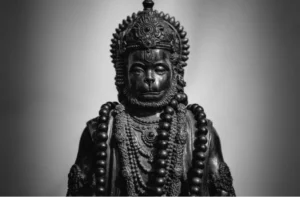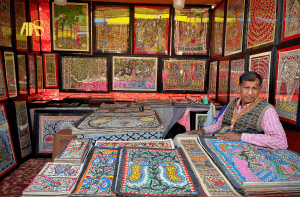Krishna paintings have captivated art lovers and devotees for centuries, offering a stunning blend of spiritual devotion and artistic mastery.
These vibrant depictions of the beloved Hindu deity bring to life the stories and legends that have shaped Indian culture for millennia.
Did you know that some of the earliest known Krishna paintings date back to the 5th century BCE?
From ancient cave art to modern interpretations, Krishna’s divine presence continues to inspire artists and collectors alike.
Let’s explore the rich world of Krishna and discover why they remain a cherished form of spiritual expression and home decor.
The Origins and Evolution of Krishna Paintings
Krishna, the eighth avatar of Vishnu, has been a central figure in Hindu art for thousands of years.
Early representations of Krishna can be found in ancient cave paintings and temple carvings, but it was during the Bhakti movement in the 8th to 17th centuries that Krishna paintings truly flourished.
This period saw an explosion of devotional art, with artists seeking to capture Krishna’s divine beauty and playful nature.
As the art form evolved, distinct styles emerged across different regions of India.
The Rajasthani and Pahari schools developed intricate miniature paintings, while the Bengal school embraced a more fluid, emotive style. Today, Krishna paintings continue to evolve, with contemporary artists offering fresh interpretations of this timeless subject.
Iconic Scenes and Symbols Krishna’s Art
Krishna paintings often depict key moments from his life and legends.
Some of the most popular scenes include:
- Krishna as a butter thief: These playful images show the young Krishna stealing butter, symbolizing his mischievous nature and the devotee’s longing for divine grace.
- Krishna playing the flute: Perhaps the most iconic image of Krishna, these paintings capture his ability to enchant all beings with his divine music.
- Radha Krishna: Paintings of Krishna with his consort Radha represent the ultimate union of divine love.
- Krishna lifting Mount Govardhan: This scene depicts Krishna’s miraculous feat of lifting a mountain to protect his devotees, symbolizing divine protection.
- Krishna in Vrindavan: These pastoral scenes show Krishna among the gopis (maids) and cows, representing his role as a protector and nurturer.
Artistic Styles and Techniques
Paintings employ a wide range of styles and techniques, each with its own unique characteristics:
- Tanjore painting: Originating in South India, these ornate paintings feature gold leaf and semi-precious stones, creating a luxurious, three-dimensional effect.
- Madhubani painting: This folk art style from Bihar uses geometric patterns and vibrant colors to create striking Krishna images.
- Pichwai painting: Traditionally used as temple hangings, these large-scale paintings often depict Krishna as Shrinathji, surrounded by intricate floral patterns.
- Miniature painting: Detailed and delicate, these small-scale paintings require incredible skill and precision.
- Modern interpretations: Contemporary artists often blend traditional imagery with modern techniques, creating fresh and innovative Krishna paintings.
Choosing and Displaying Krishna Paintings
When selecting a Krishna painting for your home or office, consider the following tips:
- Choose a style that resonates with you personally and complements your existing decor.
- Consider the size and placement of the painting. A large, striking piece can serve as a focal point, while smaller works can create intimate devotional spaces.
- Look for high-quality reproductions or original works from reputable artists and galleries.
- Pay attention to the use of color and symbolism in the painting, as these elements can greatly affect the mood and energy of a space.
- If possible, learn about the artist and the specific scene depicted to deepen your appreciation of the work.
In recent years, there has been a growing trend of digital paintings, with artists using graphic tablets and software to create stunning, highly detailed works.
These digital creations often blend traditional iconography with contemporary aesthetics, appealing to a new generation of art lovers and devotees.
Another emerging trend is the use of eco-friendly materials in paintings.
Some artists are exploring natural pigments, recycled canvases, and sustainable framing options to create beautiful artworks that are also environmentally conscious.
This approach aligns well with Krishna’s role as a protector of nature and resonates with eco-minded collectors.
Conclusion
Krishna paintings offer a unique blend of spiritual significance and artistic beauty, making them a cherished addition to any space.
Whether you’re drawn to the intricate details of a miniature painting or the bold colors of a contemporary interpretation, there’s a Krishna painting to suit every taste and style.
By bringing one of these divine artworks into your home or office, you invite not only a stunning piece of decor but also a source of inspiration, peace, and spiritual connection.
As you gaze upon the blue-skinned deity, may you feel the same joy and devotion that has inspired artists for thousands of years.





